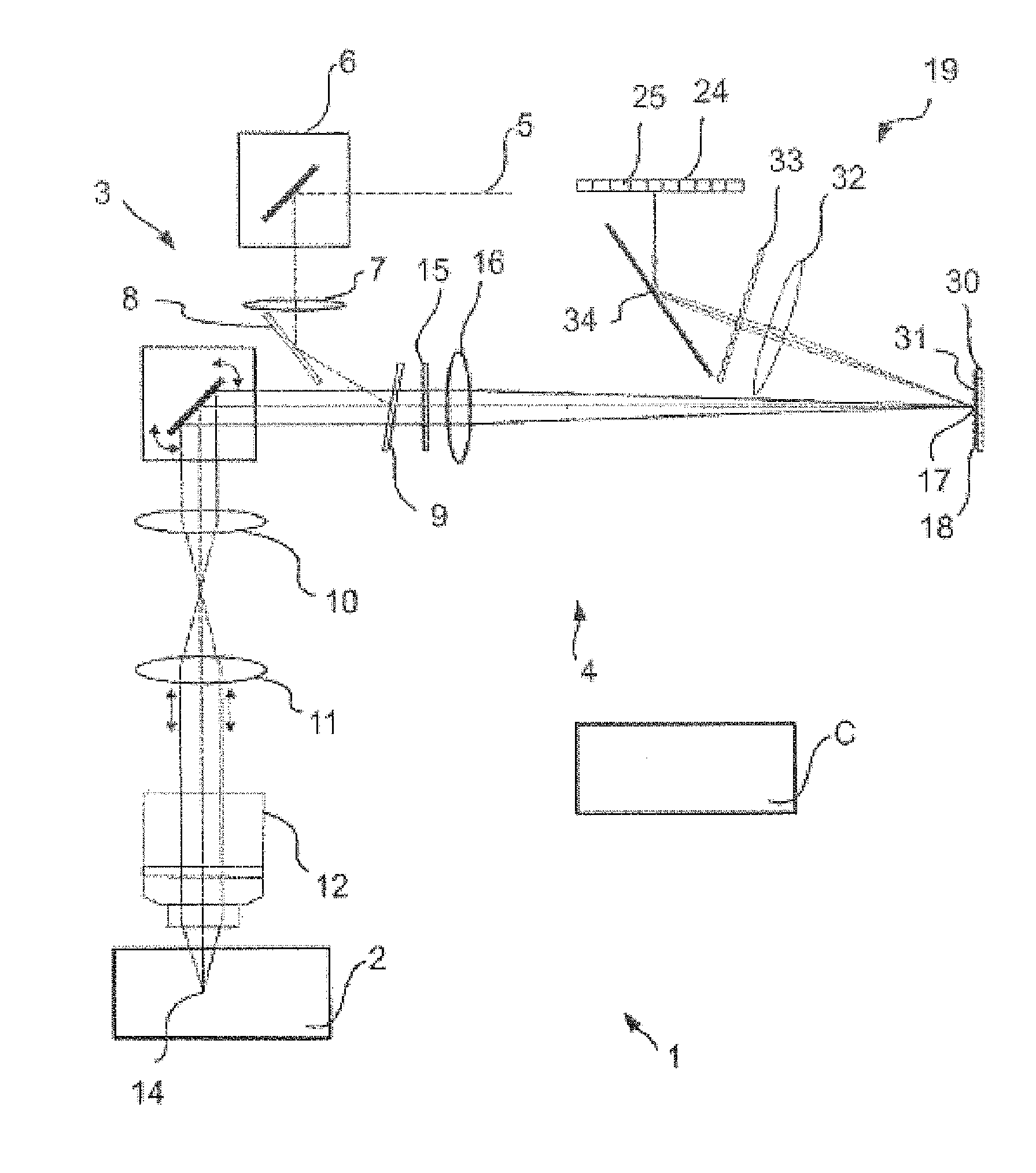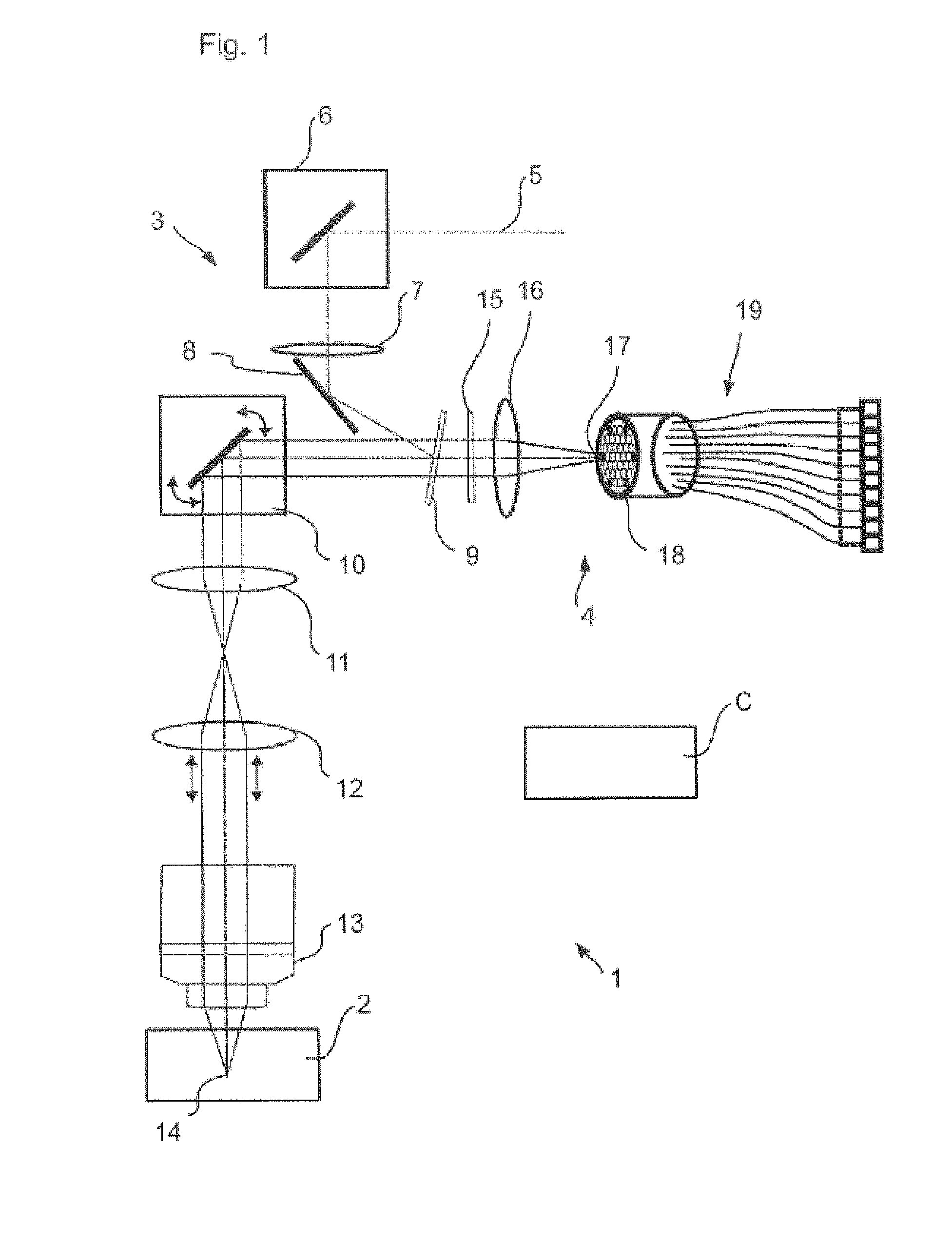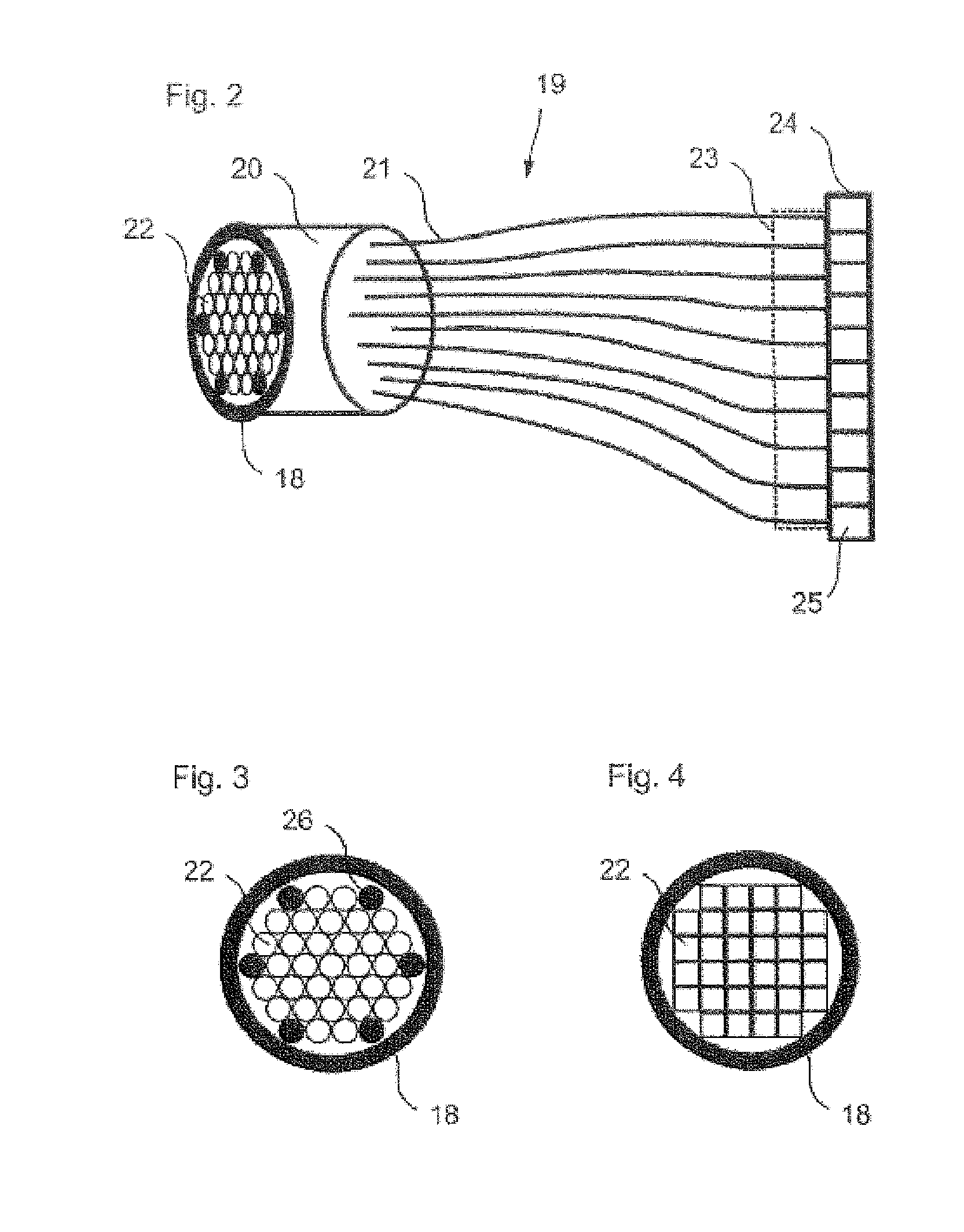High-resolution scanning microscopy
a scanning microscopy, high-resolution technology, applied in the direction of optical elements, bundled fibre light guides, instruments, etc., can solve the problem of cross talk interference, achieve the effect of reducing radiation intensity-dependent cross talk between adjacent pixels of the detector array, reducing and/or eliminating total inaccuracy, and maximising resolution
- Summary
- Abstract
- Description
- Claims
- Application Information
AI Technical Summary
Benefits of technology
Problems solved by technology
Method used
Image
Examples
Embodiment Construction
[0042]FIG. 1 shows in schematic form a laser scanning microscope 1, which is designed for microscopying a sample 2. The laser scanning microscope 1 (hereinafter also referred to by the acronym LSM) is controlled by means of a control device C and has an illumination beam path 3 as well as an imaging beam path 4. The illumination beam path illuminates a spot in the sample 2, and the imaging beam path 4 images this spot in a diffraction limited manner for detection. The illumination beam path 3 and the imaging beam path 4 share a plurality of elements. However, this is no more mandatory than a scanned spot illumination of the sample 2, which could also be wide-field illuminated.
[0043]In the case of a laser scanning microscope 1 the sample 2 is illuminated by means of a provided laser beam 5, which is coupled in by means of a deflecting mirror 6, which does not go beyond what is operationally necessary, and a lens 7 onto a mirror 8. The mirror 8 ensures that the laser beam 5 falls onto...
PUM
 Login to View More
Login to View More Abstract
Description
Claims
Application Information
 Login to View More
Login to View More - R&D
- Intellectual Property
- Life Sciences
- Materials
- Tech Scout
- Unparalleled Data Quality
- Higher Quality Content
- 60% Fewer Hallucinations
Browse by: Latest US Patents, China's latest patents, Technical Efficacy Thesaurus, Application Domain, Technology Topic, Popular Technical Reports.
© 2025 PatSnap. All rights reserved.Legal|Privacy policy|Modern Slavery Act Transparency Statement|Sitemap|About US| Contact US: help@patsnap.com



